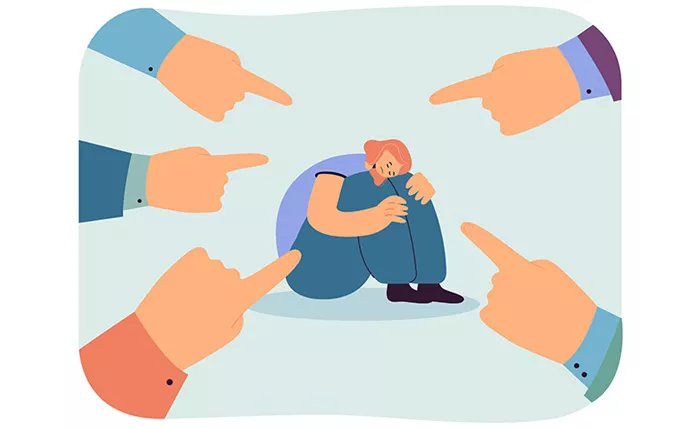Suicide stigma has long hindered progress in prevention and awareness, but health administrators have a crucial role in changing this narrative by empowering clinicians and enhancing support systems.
Mental health issues are an escalating global public health crisis, with their prevalence and complexity rising each year. In 2023 alone, clinicians turned to resources like UpToDate® more than 10.9 million times for guidance on mental health topics ranging from generalized anxiety to depression screening in adults and mental health in children and adolescents.
Healthcare leaders are uniquely positioned to transform these clinical interactions into opportunities for meaningful change, even addressing mental health challenges within their own ranks. By providing clinicians with comprehensive intervention guides and resources on self-harm and suicide prevention, administrators can significantly bolster the effectiveness of patient care. As World Suicide Prevention Day (WSPD) approaches, aligning with initiatives such as those led by the World Health Organization (WHO) is more important than ever. Here are five critical opportunities for health administrators to drive this change.
1. Acknowledge the Prevalence of Suicide and Address Modifiable Risk Factors
Suicide claims over 700,000 lives globally each year, with an estimated 20 attempts for every death. These staggering numbers highlight the urgent need for heightened awareness and prevention efforts, especially among clinicians who are often on the front lines of intervention.
Research underscores that certain risk factors, such as the availability of firearms, play a significant role in suicide outcomes. For instance, a study from Harvard’s T.H. Chan School of Public Health found a strong correlation between firearm ownership rates and suicide incidents. Clinicians must be equipped to differentiate between modifiable and non-modifiable risk factors to provide the most effective support to their patients.
Modifiable risk factors—such as poor physical health, stressors, and social determinants—can be influenced through treatment. Conversely, non-modifiable risk factors—like a family history of suicide or a personal history of attempts—remain static. By understanding these distinctions, healthcare providers can better tailor their approaches to suicide prevention.
The WHO recommends several strategies to mitigate suicide risk, including limiting access to means of suicide, promoting responsible media reporting, enhancing socio-emotional skills in adolescents, and encouraging early identification, management, and follow-up of at-risk individuals.
2. Combat Suicide Stigma by Embracing Cultural and Individual Differences
Stigma remains one of the most significant barriers to open conversations about suicide and mental health. Many patients, influenced by societal and cultural norms, may hesitate to disclose suicidal thoughts, complicating clinicians’ ability to provide care.
Suicide stigma varies widely across cultures, geographies, and gender identities. In many cultural contexts, suicide is considered a sin, leading survivors to conceal the loss of a loved one. A 2019 study highlighted how national suicide rates can reflect these cultural beliefs. Furthermore, a survey by the National Center for Transgender Equality found that 28% of respondents delayed seeking medical care due to discrimination, often encountering barriers such as refusal of care or lack of provider knowledge.
To address these challenges, healthcare administrators must understand the regional and cultural nuances surrounding suicide and mental health within their organizations. Emphasizing empathy, cultural competence, and equipping providers with tools to support diverse populations are essential steps in fostering more effective patient interactions.
3. Address Gaps in Government Support by Empowering Healthcare Providers
In many regions, inadequate mental health support systems complicate the efforts of healthcare providers to engage in meaningful mental health conversations. In the United States, for example, mental health services often fall short of community needs, despite a majority of the population seeking help at some point.
Globally, only 38 countries have reported maintaining a national suicide prevention strategy, according to the WHO. However, resources like the Suicide and Crisis Lifeline in the U.S., accessible by dialing 988, and local hotlines in other countries, provide crucial support. In this context, healthcare providers become key players in helping patients navigate the social determinants of mental health, such as education levels and socioeconomic status.
Given the potential legal and ethical implications of patient suicides, healthcare administrators can mitigate risks by equipping providers with the necessary tools and training to conduct effective mental health interventions.
4. Prioritize Comprehensive Suicide Prevention in Primary Care Settings
Primary care providers (PCPs) are often the first point of contact for individuals struggling with mental health issues, making them critical to suicide prevention efforts.
According to the Suicide Prevention Resource Center, individuals who die by suicide are more likely to have seen a PCP in the month preceding their death than any other healthcare provider. To improve outcomes, a comprehensive approach to suicide prevention should include protocols for screening, intervention, assessment, and referral, along with staff training on suicide care and counseling.
Healthcare administrators should integrate mental health support into primary care, ensuring that clinicians have access to evidence-based tools and resources on topics such as self-harm and cultural stigmas.
5. Recognize and Address the Mental Health Needs of Clinicians
Effective patient care begins with the well-being of healthcare providers themselves. Nurses and support workers experience higher rates of suicide, while physicians face elevated risks of suicidal ideation, often exacerbated by medical errors, workload pressures, and a reluctance to seek help.
Healthcare administrators must take proactive steps to create a supportive work environment that prioritizes clinician mental health. This includes providing confidential, regularly updated resources based on the latest clinical evidence.
Conclusion
As global awareness of suicide prevention grows, healthcare administrators have an expanding role in supporting clinicians and implementing effective strategies. By fostering open mental health conversations, addressing both modifiable and non-modifiable risk factors, and creating supportive workplace environments, administrators can make a meaningful impact in the fight against suicide.
[inline_related_posts title=”You Might Be Interested In” title_align=”left” style=”list” number=”6″ align=”none” ids=”12184,11545,11465″ by=”categories” orderby=”rand” order=”DESC” hide_thumb=”no” thumb_right=”no” views=”no” date=”yes” grid_columns=”2″ post_type=”” tax=””]
































